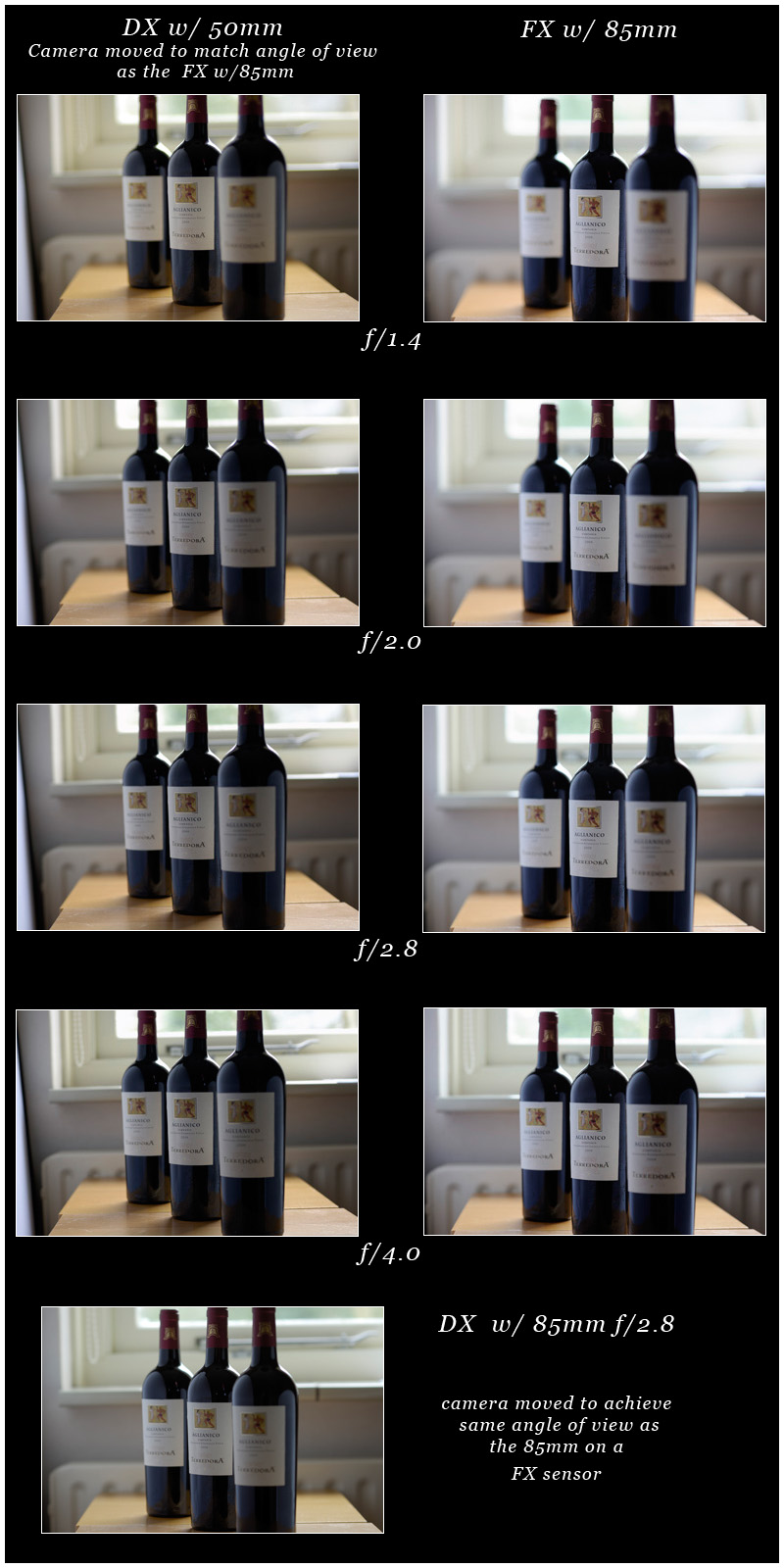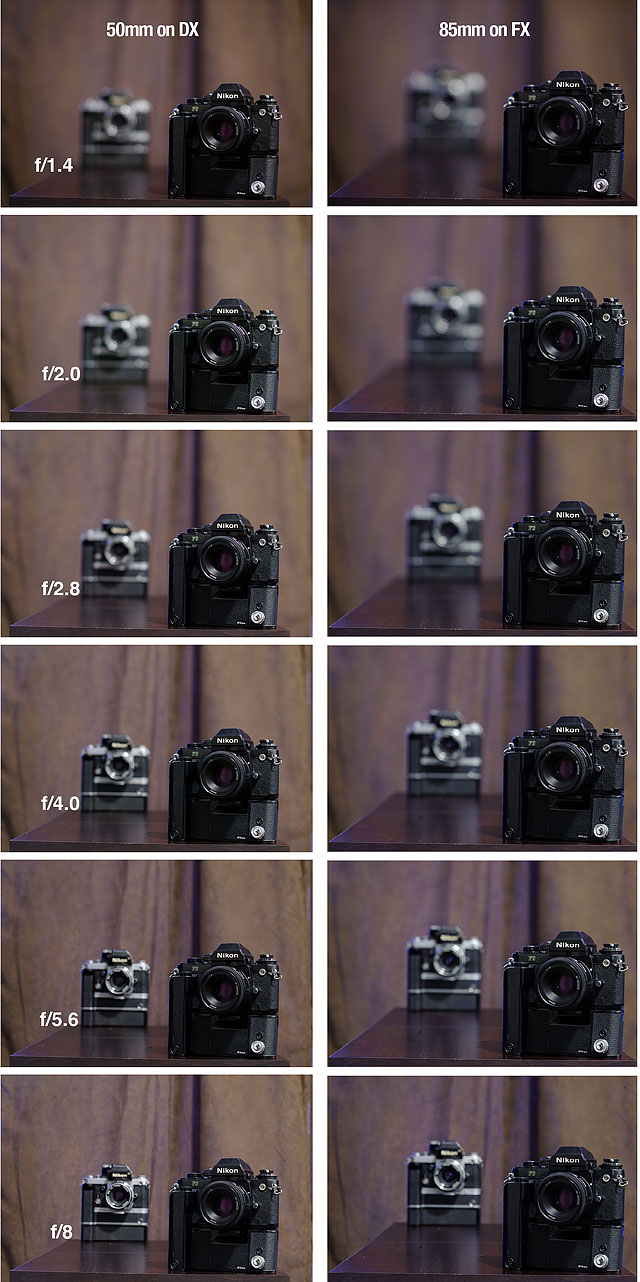If you consider 1-stop as "considerably greater depth of field" then I will agree with you, because that's all you get. I'm not sure about the "control" part, unless you mean to say "greater access to DOF", which again is true, but only 1 stop true.
To better understand this, take a look at these photos (which would have been better served with a 50mm and a 75mm lens, but who makes a 75mm lens - so the 85mm DOF will be
slightly less than the 75mm would have been with the same field of view)...
In each case you can see that the FX camera will exhibit greater DOF for a particular view at the same aperture, but if you compare the FX photo from the next stop down (i.e. DX f/2.8 vs. FX f/4, DX f/4 vs. FX f/5.6) you will see that they are approximately the same (and would have been closer were they using focal length equivalent lenses from the same spot).
When you get down to fast primes that difference can be considerable, for sure, in terms of the amount of bokeh - but it's still only one stop.


